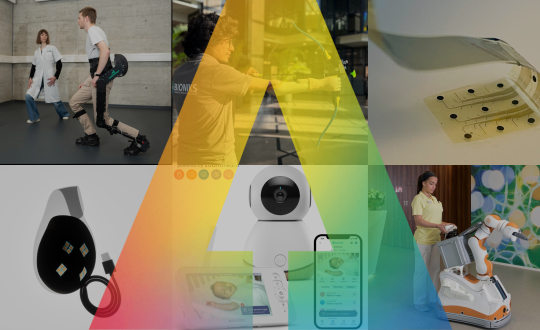Exploring the future together: Multi-robot coordination opens new possibilities for the future of robotics

- 13 December 2022
by Irina Timoshenko
The need to solve complex technical problems with joint action has long been a challenge for humans. As we enter an age where we can programme a large set or a group of robots to coordinate their actions for good, there opens up a world of possibilities for the future of robotics and humans.
The AI for Good webinar, “Collective robotics: Multi-robot coordination in complex environments,” discusses the latest technologies that enable robot-robot teamwork and how such systems can support humans in uses such as autonomous driving, search and rescue, and for protecting the environment.
“Collective intelligence can be put into practice. There are a couple of very successful recent case studies where we have been deploying collective intelligence into the real world.” says Amanda Prorok, Associate Professor at the University of Cambridge.
Despite the great promise of multi-robot systems (MRS) that has long been in the focus of attention of both robotics and artificial intelligence (AI) experts, this area is still being explored. Collective robotics is built on the creation of complex things from small simple elements.
Multi-robot systems coordination and cooperation
While talking about the process of learning to communicate in multi-robot systems, the key areas that need to be refined include: “decision-making for autonomous systems… [and] multi-robot coordination and algorithm for estimation control and planning for such systems,” said Herbert Tanner, Professor at the University of Delaware.
Amanda Prorok, Associate Professor at the University of Cambridge believes that “the key point here is that whether it is through simple coordination or through more sophisticated forms of collaboration, these systems perform better when there are several robots working together.”
There is, however, a problem in multi-robot coordination called “reality gap” which is the “transition of various solutions into real world.”
“Sometimes the robots and the algorithms cannot be improved but what we can improve is the environment they are operating in,” said Prorok. “We should think more how to provide resilience to unforeseen disruptions through collective intelligence.”

Programming robots to work with humans
Collective robotics raises many questions. For instance, “what can we do with large number of robots?” asks Maria Gini, Professor at the University of Minnesota.
“Single robots are useful in many situations and are easy to control. However, multiple robots can be more useful because they can do work in parallel. At the same time, they are more difficult to control.”
Gini points out that one of the hardest issues in collective robotics is “programming the coordination of robots.” “Programs to control the robots need to scale with the number of robots and tasks, and be robust to robot failures”, she mentioned.
Regarding, human-robot collaboration, Rachid Alami, Senior Scientist at LAAS-CNRS, said it is important to develop “cognitive and interactive abilities for a robot to allow it collaborate with humans and to be pertinent, transparent, legible, and acceptable in performing his tasks”.
“Humans and robots have different roles and this has to be taken into account,” emphasized Alami. However, there is “the need for every robot to have capacity to interact with humans and with other robots.”
“Joint action is the key aspect because it shows clearly how we, humans, are able to collaborate and share tasks,” concluded Alami.
Collective robotics to improve the environment
Collective robotics has great potential in helping the environment. Ani Hsieh, Associate Professor at the University of Pennsylvania talked about “scientific and technological challenges of using collective robots for environmental monitoring applications”.
“We rely on our natural world to power our economic activities, so any kind of accidents can cause not only horrible environmental impact, but also have a very negative economic impact,” said Hsieh.
While talking about “significant dynamics” of unexplored environments, she mentioned that “to adapt and actively collect data, we need robots.”
“Robot teams are not only crucial but a necessary tool in our attempt to better monitor, manage and protect these large-scale environments in a sustainable, equitable, and resilient matter,” believes Hsieh.
The AI for Good webinar emphasized that multiple robots physically collaborating with each other can perform highly versatile tasks under minimal human supervision to accelerate progress towards the Sustainable Development Goals.
To learn more about multi-robot coordination, watch the full webinar here.
Follow AI for Good to stay informed about the latest developments in AI and robotics.














